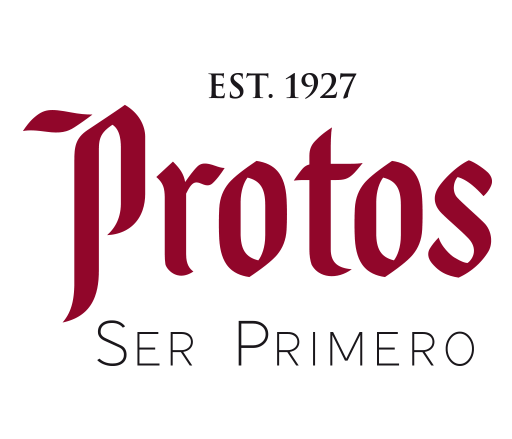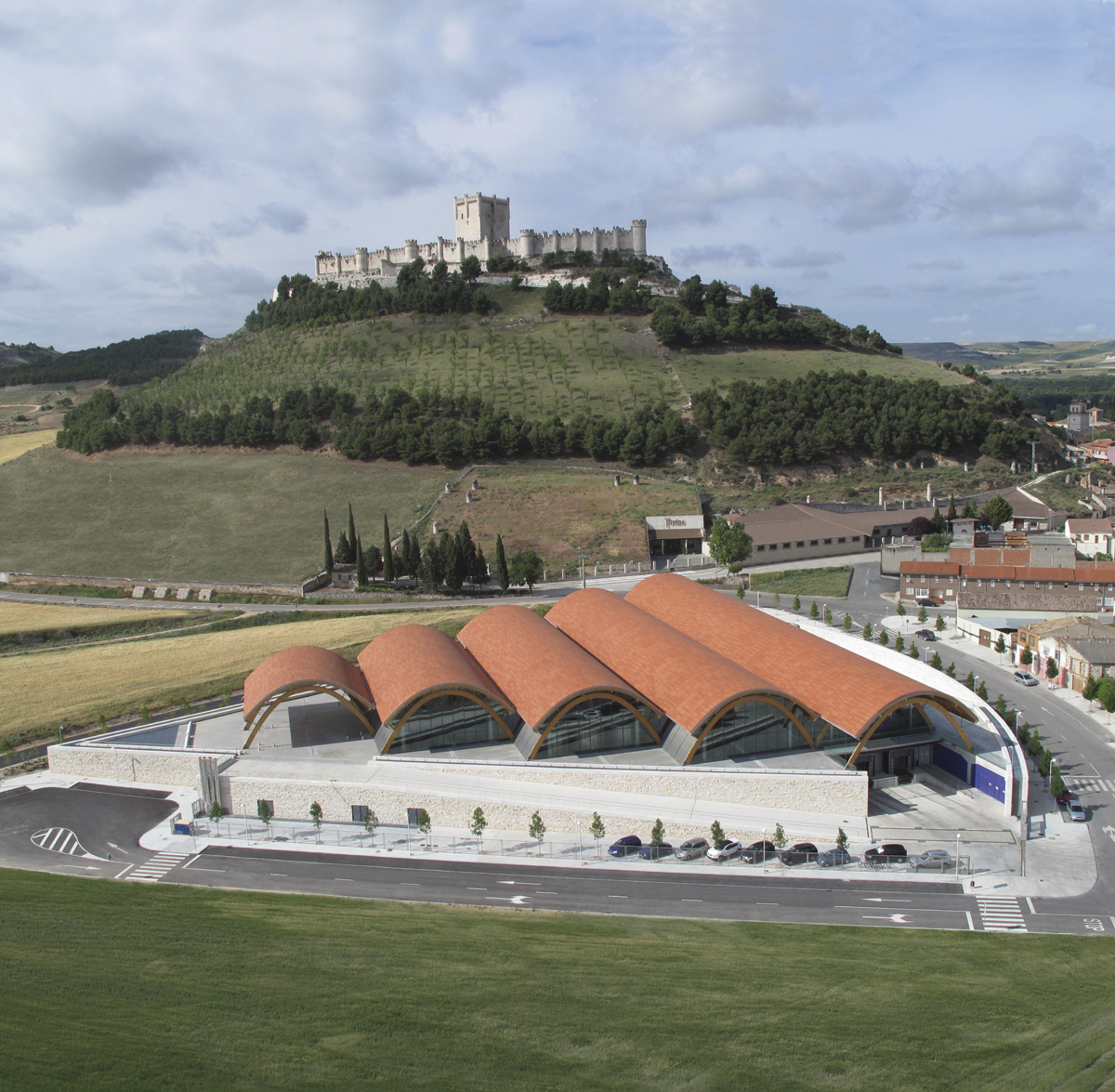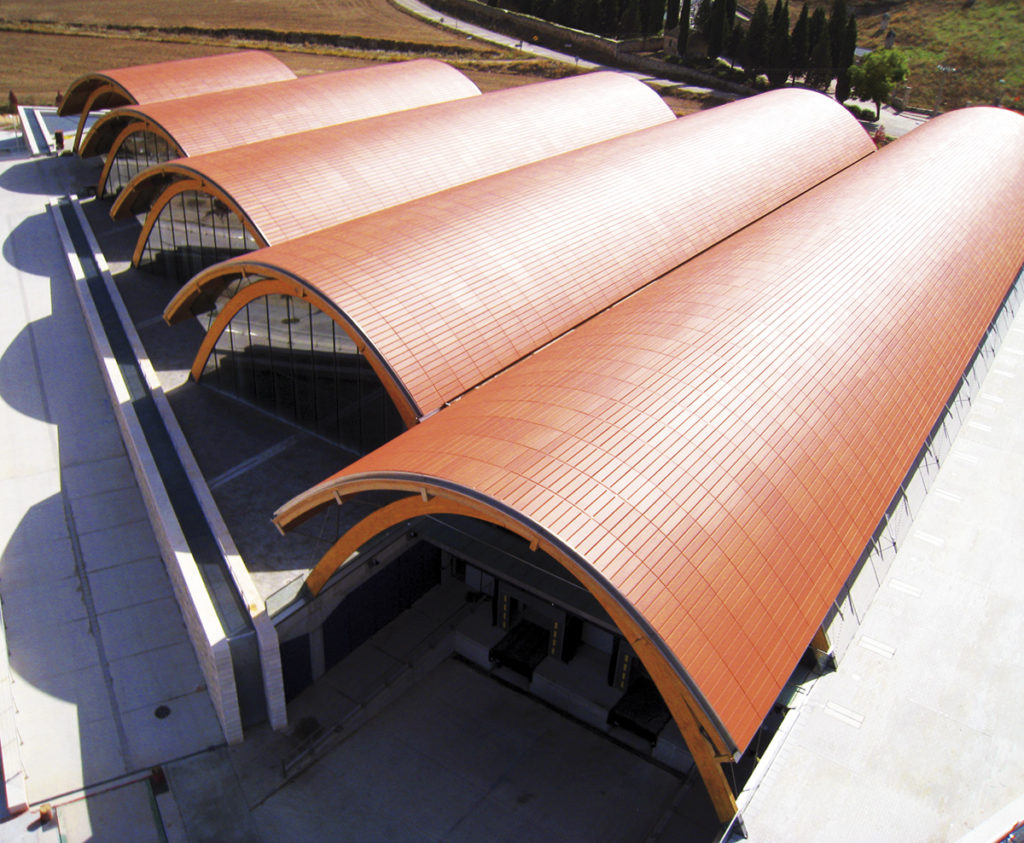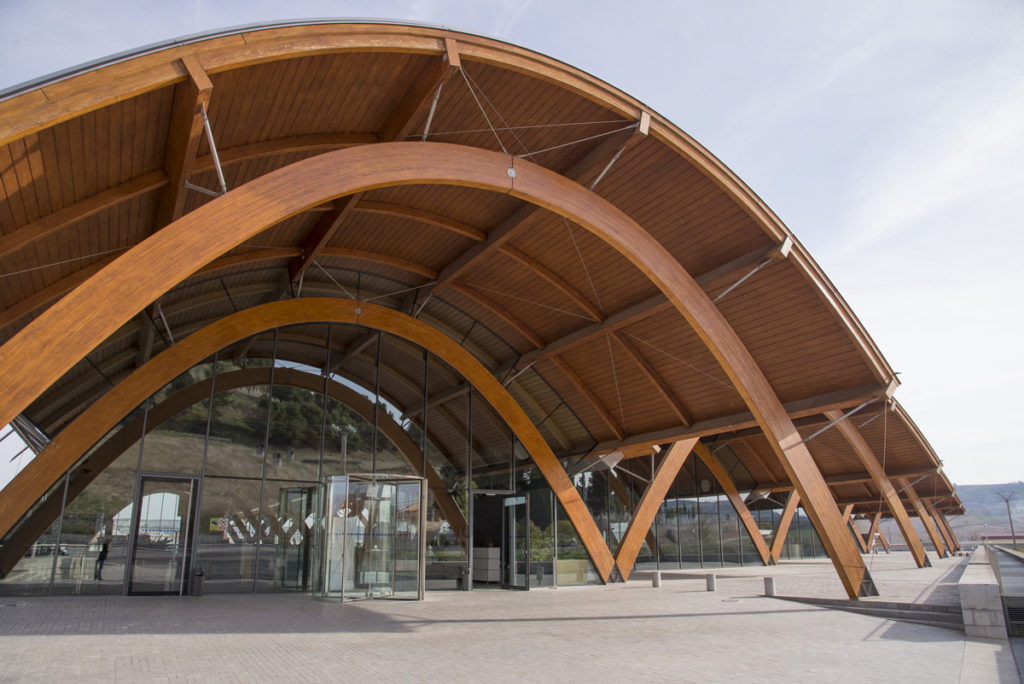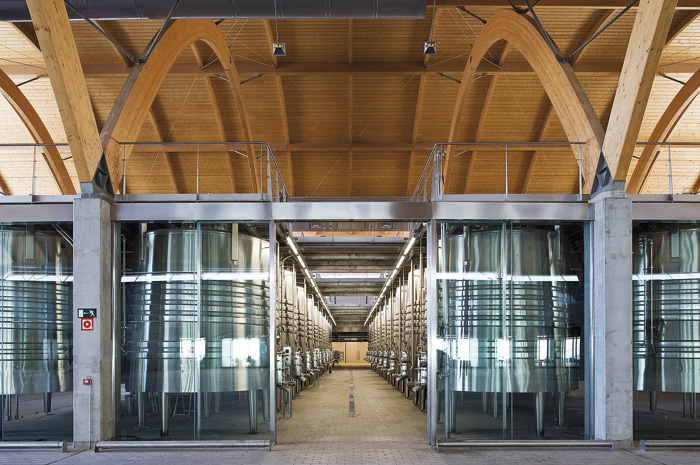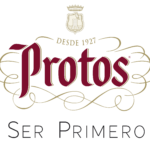On the outside, the base has perimeter walls and stone cladding, to reinforce the idea of a volume anchored to the ground. At the west end of the base, there is a two-level patio garden, around which the spaces open to the public and corporate and administrative office spaces are arranged. This is an intimate patio from which the views of the castle take on extraordinary beauty and power.
In turn, the light structure rests on the base and covers the opening created within it by the central space of the production level. It houses the main lobby of the building, as if it were an extension of the exterior space within the building, on the entrance level, affording views of the production level.
The light structure was designed as a vaulted structure broken down into five large bays with 18-meter spans articulated in the section and plan views. This construction is designed as a modular structure system of parabolic arches made of laminated wood, which support a roof composed of five vaults of differing length using stainless steel structural components. The vaults, which are also parabolic, are composed of a secondary structure of laminated wood beams and a wall plate also made of laminated wood boards. Finally, the roof is covered with a system of large format terracotta panels.
